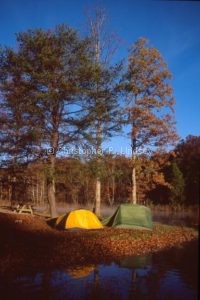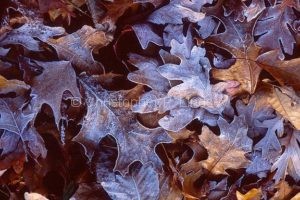
Nothing beats fall camping.
Fall. I think it’s my favorite season — I love the crisp, chill air at night, the fall harvest, and I especially love the vibrant patchwork of leaves that change from green to yellow to orange to red. There’s nothing better than an October camping trip, sitting around a crackling fire under the stars and rustling leaves with a hint of frost nipping at your nose.
But as a gardener, fall terrifies me. It seems to sneak up so quickly, and with it comes a list of failed summer tasks. Suddenly I’m in a race against the clock, triaging projects or admitting defeat and moving them to next year’s list. But fall also comes with its own new set of projects, and a lot of those can’t be ignored. I’ve found the best thing to do is make a checklist/timeline and work my way through. Here’s my list for USDA hardiness zone 5b:
September
Technically, fall doesn’t really start until September 22nd (the equinox), but things start changing quickly before that. After June 22nd the days get shorter, and the amount of daylight that’s being lost becomes accelerates as the date gets closer to September 22nd. This is why I start my planning on September 1st.
- Order/buy bulbs: If you have want to plant fall bulbs, get them ASAP. Stores will run out and you want time to plan your plantings.
- Take cuttings: Herbs like basil and mint respond well as cuttings. Cut a small piece off, remove the lower leaves, and plant it in water. Once the roots are 2″ long you can pot it up as a houseplant and use fresh herbs throughout the winter.
- Plant cool-weather vegetables in mid-September, like arugula, radishes, and bok choy.
- Know the frost dates for your area. You can check this on our earlier blog post.
- Fix any broken irrigation lines so they can be flushed later.
- Take photographs of all container plantings. You can look at them over the winter and figure out which ones worked and which ones didn’t (and buy the ones that worked again next year).
- Plant any perennials or shrubs that haven’t made it into the ground yet this season.
- Transplant any perennials or shrubs that need to be moved.
- Re-seed any areas of your lawn that need it.
October (pre-frost)
- Harvest any vegetables. If you have green tomatoes, place them in a paper bag with an apple to ripen them. Can, freeze, or dehydrate them.
- Harvest any other herbs. You can freeze them or dehydrate them.
- Bring in any container temperennials that you want to overwinter (Mandevilla, Begonia).
- Remove your tomato, pepper, and tomatillo plants right before frost. They will get slimy and difficult to remove otherwise.
- Harvest your cool weather vegetables that were planted in September.
- Plant your spring bulbs.
October (post-frost)

Frost-kissed oak leaves shine in the morning.
- Collect any seeds from garden plants or herbs.
- Rake your leaves and compost them.
- Harvest any kale, cabbage, or swiss chard (the flavor is better after frost).
- Bring in any container plants that need to be overwintered (Ficus ‘Chicago Hardy’, grapes, sage, bay laurel) and store in an unheated garage.
- Collect bulbs from elephant ears, dahlias, cannas, and caladiums and overwinter in a cool, dry, place (but not too cool!)
- Pick up any fallen fruit around fruit trees to prevent pests from overwintering and attacking next year’s crop.
- Mow the lawn.
- Flush any irrigation lines that aren’t below the frost line.
- Water any plants that need it before the ground freezes.
November
- Clean your vegetable gardens. Remove any old plants and foliage that has fallen on the soil. Weed and mulch with straw or leaves.
- Empty soil from pots can’t handle freezing (ceramic, terra cotta, many plastic pots, etc) and bring pots inside.
- Bring in garden hoses.
- Turn off outdoor faucets.
Remember, this is just my list. Yours might be different, and if you’re in a different hardiness zone you might have to shift the timeline a little.
Over the next few weeks we’ll cover some of these items in more detail, and we’ll update the items above with links to the corresponding posts.



